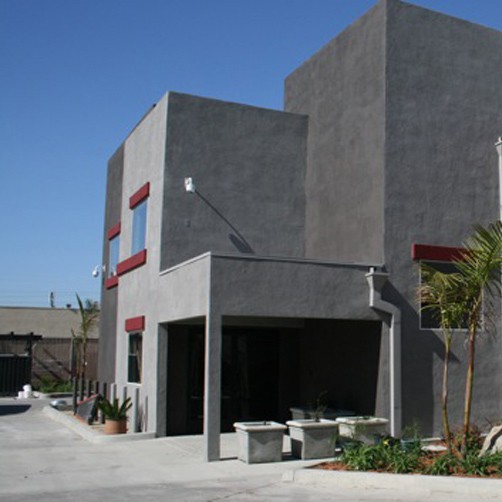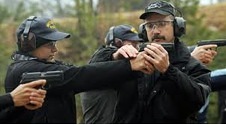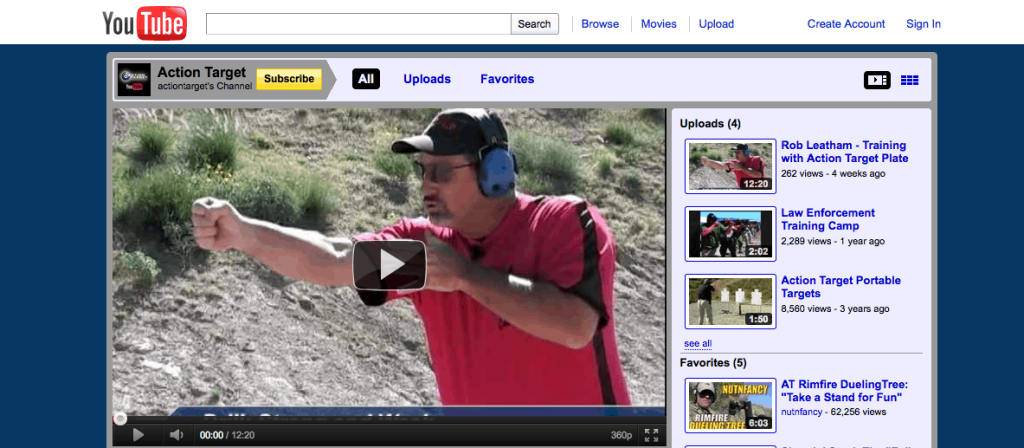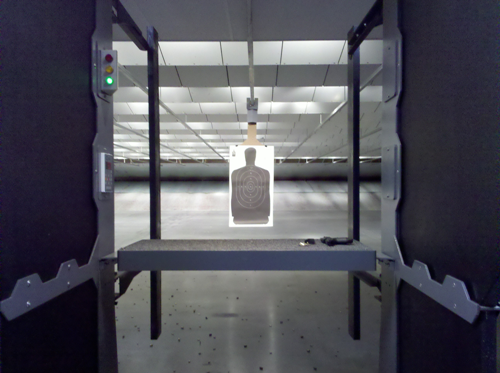Myths About Rubber Berm Traps

At its most basic level, a rubber berm trap is approximately two feet of chopped rubber laid on top of an angled support structure to create a backstop or “berm” to catch bullets fired into it. There are several different approaches to this fundamental idea, but the same basic principles apply to them all. When […]
New Local Shooting Range Promises a Clean Environment

Field Time Target and Training in Stanton, CA, has teamed with Action Target to create a state-of-the-art shooting range for firearms training. The new facilities include a firearms and ammo retail store, two indoor shooting ranges, and classrooms for in-depth instruction. “Orange County is range deprived,” said Field Time owner Greg Caringella. “There was a […]
The Timeless Debate: Law Enforcement Use of Range Facilities?

Range owners who are preparing for a new build must consider every possible revenue stream since it is their responsibility to ensure the range is profitable. During this process, many range owners believe they will be able to entice local law enforcement into using their training facilities and have this be a major source of revenue. This timeless debate–whether or not a relationship with the local law enforcement should be a major part of a range’s business plan–should be carefully considered before embarking on range construction.
Law and Order (Part One)

Written by Keith Mehlin Editor’s Note: This article was originally published on August 26, 2010. Due to the popularity of the article and the number of new subscribers since it originally went out, Action Target has decided to republish this two part series. The Council Bluffs Police Department had an outdoor 50 yard range for […]
Range Project Spotlight: New Range In Pinellas County, Florida

The Pinellas County Sheriff’s Office will soon train in their new state-of-the-art outdoor baffled firing range. This new range includes Action Target’s high quality outdoor Total Containment Trap, with a Screw Conveyor collection method. Both innovative systems make recycling much easier by catching all fired bullets in one 55 gallon barrel.
The new outdoor baffled firing range has a variety of tactical target systems, creating a multitude of training scenarios and environments that increases the range’s ability to do more than simply “qualifying” police officers.
Action Target at the Bianchi Cup
Action Target, Inc. recently upgraded the target systems used at this year’s NRA/Midway USA Bianchi Cup match range in Columbia, MO. This year’s upgrade was completed as part of Action Target’s sponsorship of this prestigious championship, preserving the long standing relationship Action Target has with this event.
Nearly 20 years ago, Action Target’s Co-Founder, Addison Sovine, traveled to the Bianchi Cup to install new target systems at the Chapman Academy Ranges. Since then, Action Target equipment has powered all the range systems for the prestigious event.
Action Target Installs Total Containment Trap for Livonia PD

Action Target would like to announce the newly updated Livonia Police Department Outdoor Rifle Range in Livonia, Michigan. The Livonia PD oversaw the removal of their existing bullet trap, heavy excavation and modification of existing dirt beams, concrete work and installation of Action Target’s Total Containment Bullet Trap. We wish to thank the Livonia PD […]
Action Target Completes New Shooting Range and Retail Store in Piney Flats, TN

Action Target is excited to announce the completion of the Shooters Edge Commercial Shooting Range and Retail Store located in Piney Flats, TN. This facility offers 5 Star accommodations and a clean and well designed atmosphere with extraordinary customer service. Having the help and dedication of Joseph Bush, Don Reimer, Action Target Great Lakes Territory Manager […]
Latest Projects in the Great Lakes Region
No matter how big or small, if you need a target, range, ventilation system or custom facility, Action Target has a solution. Starting with our portable steel targets, graduating to our Tactical Application Scenario Kit (TASK) for the ultimate in portable options to the designing and building of a more permanent solution with a member […]